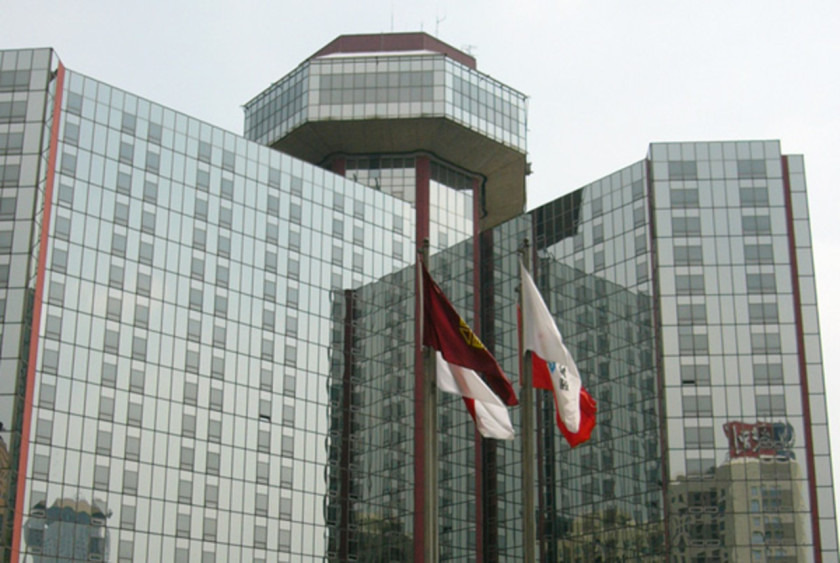HZB is involved in the Helmholtz exchange programme with China

With regard to Chinese institutions, the Helmholtz Beijing Office (photo) wants to promote the Helmholtz Association and its outstanding research environment and facilities as an attractive location for the training of young scientists. Photo © Helmholtz-Gemeinschaft
The Helmholtz Association and the Office of China Postdoctoral Council, OCPC, are establishing a common exchange programme for Chinese postdocs. The young scientists will be researching at eight Helmholtz centres for two years before returning to China. HZB is also involved in the exchange programme, which runs from 2017 to 2021.
Two Chinese postdocs have recently started working at HZB, funded by a stipend from the programme. Dr. Junming Li is researching in the young investigator group “Materials and Interfaces for Stable Perovskite Solar Cells”. This group is headed by Dr. Antonio Abate, who is presently at Fuzhou University in China as a visiting professor. The second postdoc, Hongtao Yu, is working in the group of Prof. Dr. Yan Lu, an expert for colloid chemistry. Two more postdocs will be arriving at HZB at the beginning of 2018 in the scope of this exchange programme.
For their research stay, the postdocs are receiving a scholarship equally co-funded by the Chinese OCPC and the host centre. In total, 50 young researchers this year have received the opportunity to research at the Helmholtz centres under the supervision of experienced scientists, and to acquire valuable international experience.
The exchange programme between the Helmholtz Association and OCPC is the first of its kind on this scale. Previously, only very few young OCPC postdocs from China would be given the opportunity to research in another country. The postdoctoral exchange programme is intended to create a basis for long-term, sustainable cooperation between the two countries in science and education.
Helmholtz Centres involved:
FZJ (coordination), DESY, HZB, HZI, GFZ, GSI, KIT and HMGU
Also involved is the Helmholtz office in Beijing.
(sz)
https://www.helmholtz-berlin.de/pubbin/news_seite?nid=14743;sprache=en
- Copy link
-
Optical innovations for solar modules - which are the most promising?
In 2023, photovoltaic systems generated more than 5% of the world’s electrical energy and the installed capacity doubles every two to three years. Optical technologies can further increase the efficiency of solar modules and open up new applications, such as coloured solar modules for facades. Now, 27 experts provide a comprehensive overview of the state of research and assess the most promising innovations. The report, which is also of interest to stakeholders in funding and science management, was coordinated by HZB scientists Prof. Christiane Becker and Dr. Klaus Jäger.
-
Catalysis research with the X-ray microscope at BESSY II
Contrary to what we learned at school, some catalysts do change during the reaction: for example, certain electrocatalysts can change their structure and composition during the reaction when an electric field is applied. The X-ray microscope TXM at BESSY II in Berlin is a unique tool for studying such changes in detail. The results help to develop innovative catalysts for a wide range of applications. One example was recently published in Nature Materials. It involved the synthesis of ammonia from waste nitrates.
-
BESSY II: Magnetic ‘microflowers’ enhance magnetic fields locally
A flower-shaped structure only a few micrometres in size made of a nickel-iron alloy can concentrate and locally enhance magnetic fields. The size of the effect can be controlled by varying the geometry and number of 'petals'. This magnetic metamaterial developed by Dr Anna Palau's group at the Institut de Ciencia de Materials de Barcelona (ICMAB) in collaboration with her partners of the CHIST-ERA MetaMagIC project, has now been studied at BESSY II in collaboration with Dr Sergio Valencia. Such a device can be used to increase the sensitivity of magnetic sensors, to reduce the energy required for creating local magnetic fields, but also, at the PEEM experimental station, to study samples under much higher magnetic fields than currently possible.
